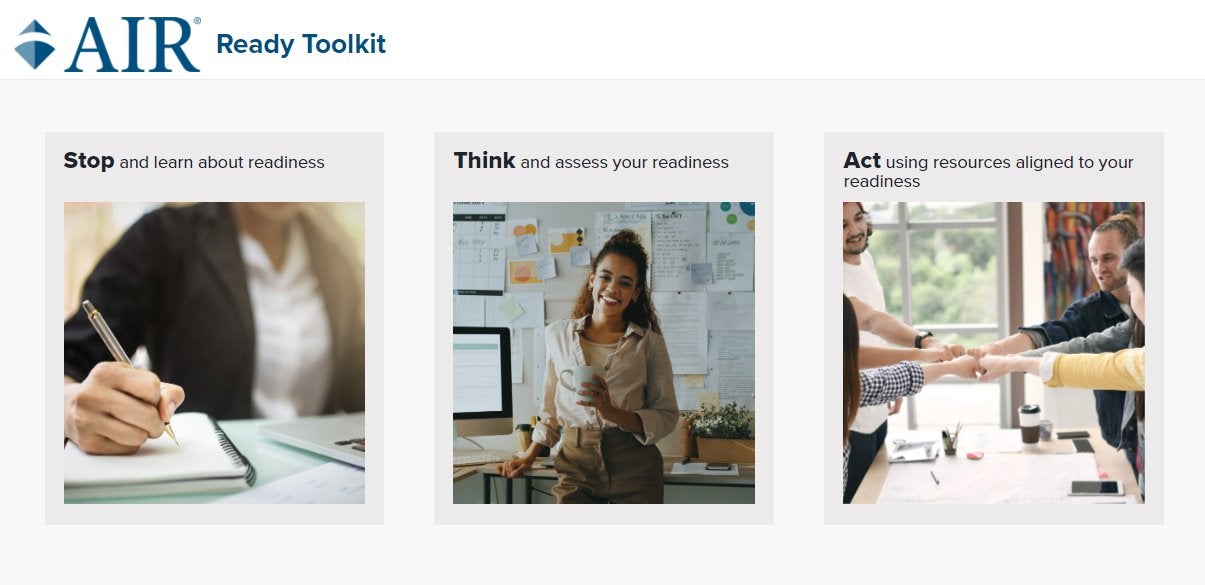The out-of-school time (OST) sector provides many opportunities for staff learning and improvement, including webinars, newsletters, and professional conferences. These opportunities also provide time and space for networking, generating new ideas, and potentially using those ideas to change existing operations, practices, and strategies. But sometimes the ideas just don't take hold. Why is that? How could it be that the research- and evidence-based strategies that you just learned about didn’t work for your program?
This could happen for any number of reasons, including lack of time and resources, staff resistance to new ideas, confusion from youth participants about the change, or misalignment with existing policies and practices. These are just a few examples that add up to a bigger piece of the implementation puzzle: readiness.
The concept of “readiness”—or lack thereof—is often the culprit behind challenges in implementation.
Research has described readiness as the product of an organization’s motivation and capacity to implement an innovation. We have spent the last two years building on this foundational work to explore what readiness means for OST programs, by diving deep into the literature and talking to OST practitioners and field leaders.
One key takeaway from our work: Organizations don’t make change happen, people do. Organizations, and those who lead them, can create processes and practices that support implementation, but ultimately it is the practitioners, participants, and other key stakeholders who are essential to change management. These people are the ones responsible for implementation. In other words, all of these people need to be “ready” before any change can happen.
We define readiness in OST as the overall willingness and capacity within an organization and its staff that enables change to occur successfully. More specifically for programs, this means:
- Having strong operations and procedures. This includes building a positive culture and climate, creating processes for collaborative decision-making, ensuring alignment with existing policies and practices, and having the capacity and plans for implementation.
- Ensuring staff well-being. Programs should help staff develop self-efficacy and a growth mindset, as well as ensure staff feel that they have the necessary knowledge and skills to help facilitate change.
- Keeping stakeholders, including young people and their families, engaged and informed. Programs should ensure they have input into decisions and an understanding of how these decisions will affect them.
- Accessing specific resources, materials, and training that are unique to the specific and intentional change programs are making or new idea they are introducing.
This last item in the list—gathering knowledge, resources, and materials—is often where organizations start, but it is only part of being ready. To be truly ready means attending to all four elements of readiness—the specific intentional practices, and the more general practices of operations, staff, and stakeholders. Our research shows that they are all equally important.
If this feels like a lot to think about, don’t worry! We have learned that readiness is something that can be measured and built over time. We find peace in this idea because it gives us a starting place to engage in readiness thinking when starting something new. We have also used what we’ve learned to create a free, online toolkit (https://www.readytoolkit.org/) for OST leaders and staff to help support and develop readiness thinking. Users can create a free account, take a readiness assessment, and receive an automated report with readiness scores to gain insight into where they are more and less ready for change.

The toolkit links to the many other resources and tools already available that may be used to build readiness. It also includes a growing number of readiness-specific tools (https://readytoolkit.org/learn-more-about-ost-readiness/) for those who are just beginning to think about readiness.
It is our hope that by introducing the idea of readiness and creating tools and resources to measure and build readiness, programs can more smoothly engage with new ideas and ensure that they are ready to implement them. We encourage you to consider: Are you ready for change?



